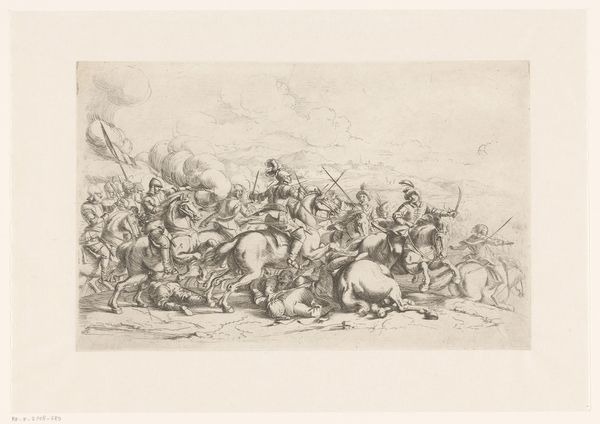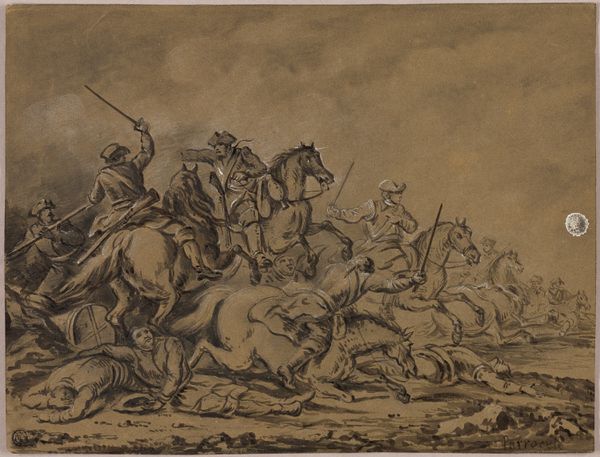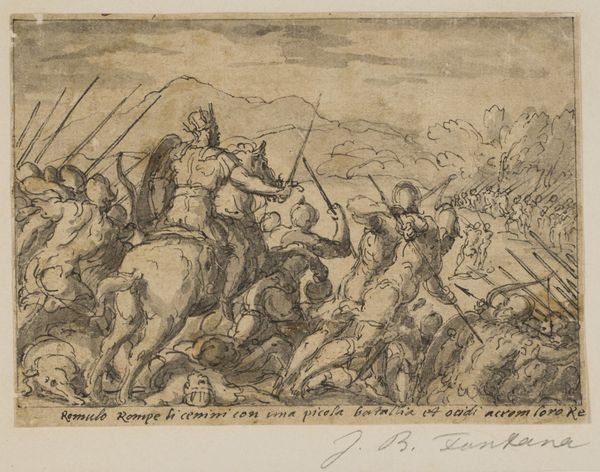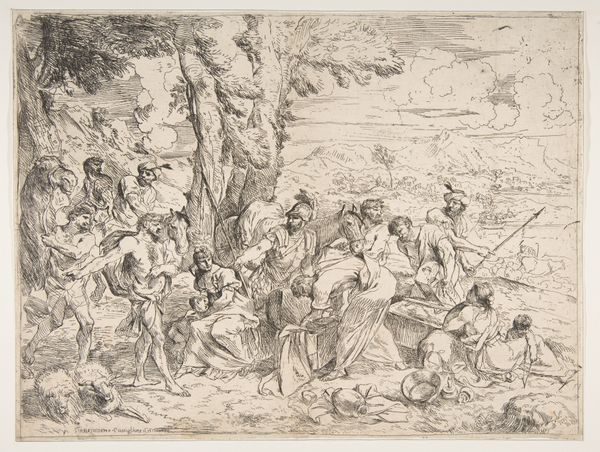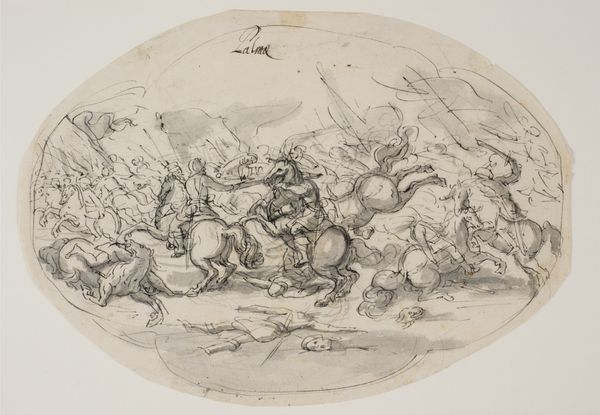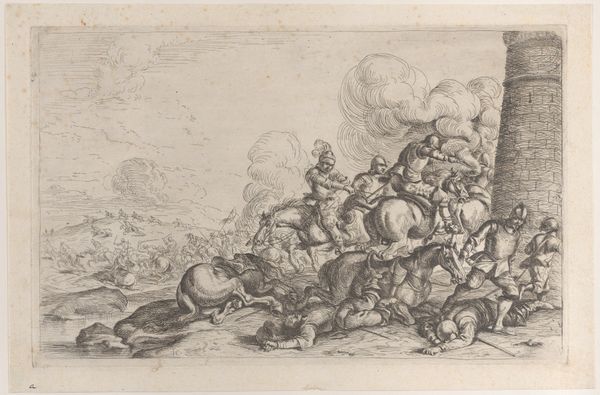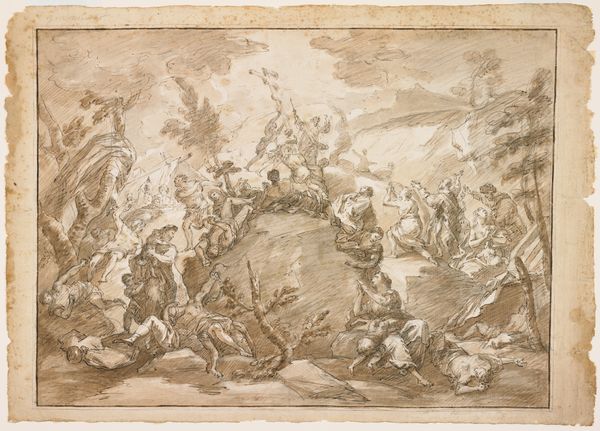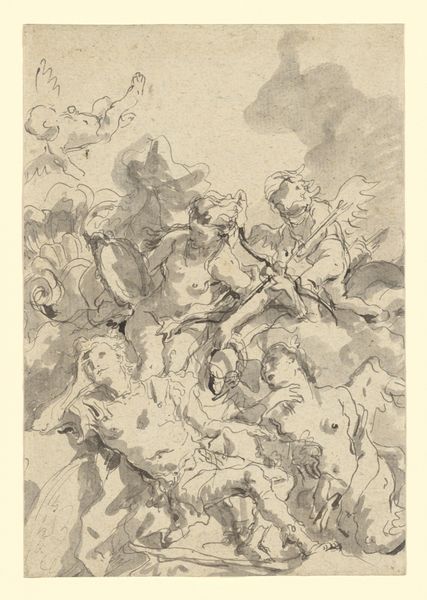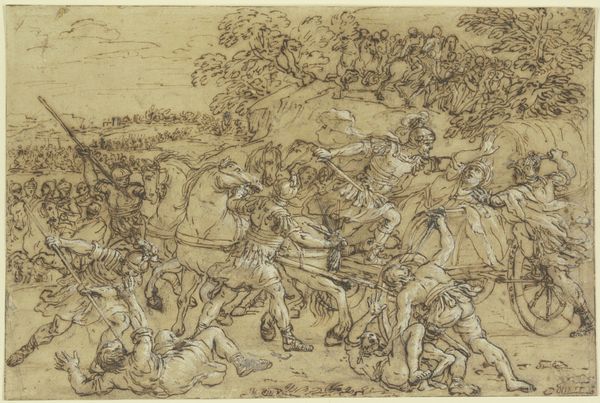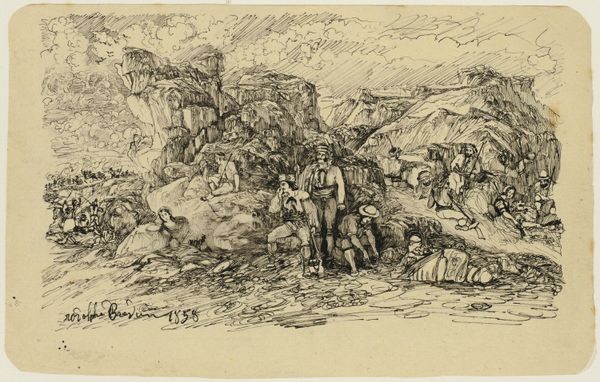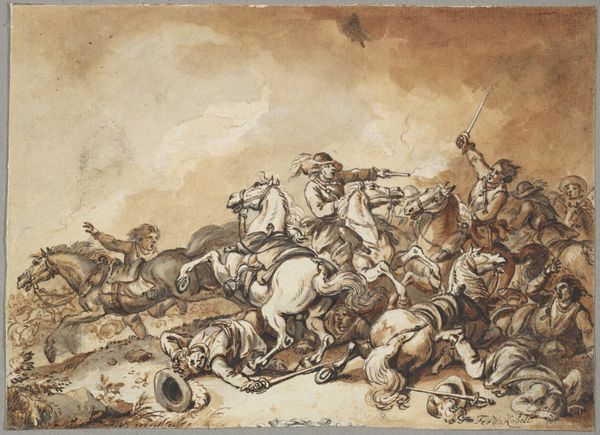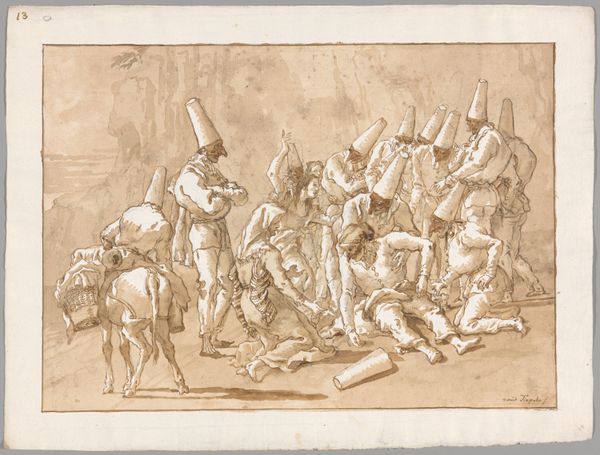
drawing, ink, charcoal
#
drawing
#
allegory
#
baroque
#
ink painting
#
charcoal drawing
#
ink
#
charcoal
#
history-painting
Dimensions: 142 mm (height) x 202 mm (width) (bladmaal)
Curator: Looking at this evocative ink and charcoal drawing titled "Justice, Peace and Prudence," I'm immediately struck by its dreamlike quality. It’s as if we’re glimpsing a scene from an ethereal court. Editor: It feels like a fleeting thought, a sketch of a memory almost lost to the mists of time. It gives off a definite feeling of baroque extravagance filtered through someone’s quickly drawn concept. What grabs me, though, are those weighty allegorical figures tangled together in this swirl of clouds—it almost feels turbulent! Curator: Indeed. The work is attributed to Gaspare Diziani, dating sometime between 1689 and 1767. Diziani uses the ink and charcoal medium to explore an allegorical representation of these cardinal virtues. Notice the figure of Justice wielding her scales aloft, overlooking the embodiment of Peace, and then Prudence contemplating... well, her own implications within the balance of the two. Editor: Prudence always feels like the dampener at the party, doesn’t she? You’ve got Justice making these grand gestures, and Peace reclining like she’s at a spa, but there's Prudence, quietly considering everyone's possible ulterior motives. It makes the drawing oddly modern! Like a political cartoon waiting to happen. Curator: I find it fascinating how the swirling ink work creates a sense of drama but also instability. Traditionally, these virtues are meant to project strength and unwavering commitment, yet Diziani imbues them with a certain dynamism that questions whether these ideals are ever fully achievable, but ever in tension with one another. This is, after all, a history painting sketch, exploring some profound, persistent ideals in history. Editor: That's so true. The ambiguity gives the drawing a surprisingly poignant feeling. The technique actually undermines any potential grandstanding. The unfinished quality leaves space for questioning these loaded concepts and the messy reality they try to categorize. I can feel my notions about justice being provoked into examination and maybe acceptance. Curator: And it invites me to continue tracing those themes over time: those values were important then, remain so now, but what about the future? It makes you wonder how our symbols today will read centuries from now. Editor: Yeah, it’s cool to witness this 17th-century take on virtue actually making you confront the present moment instead of delivering some pronouncement from the past. It's rare air when artwork has this much nuance, wouldn’t you say?
Comments
No comments
Be the first to comment and join the conversation on the ultimate creative platform.
